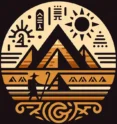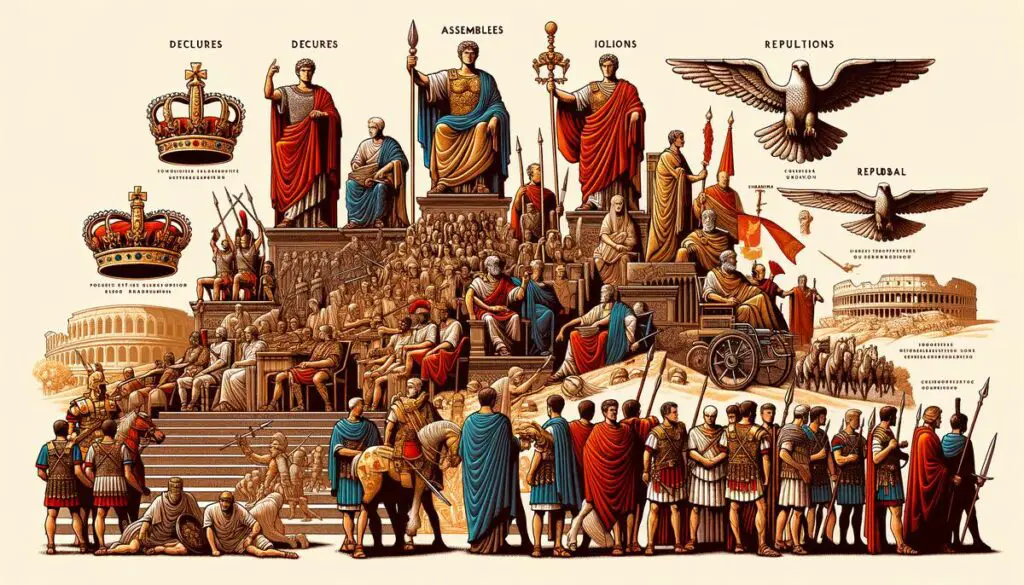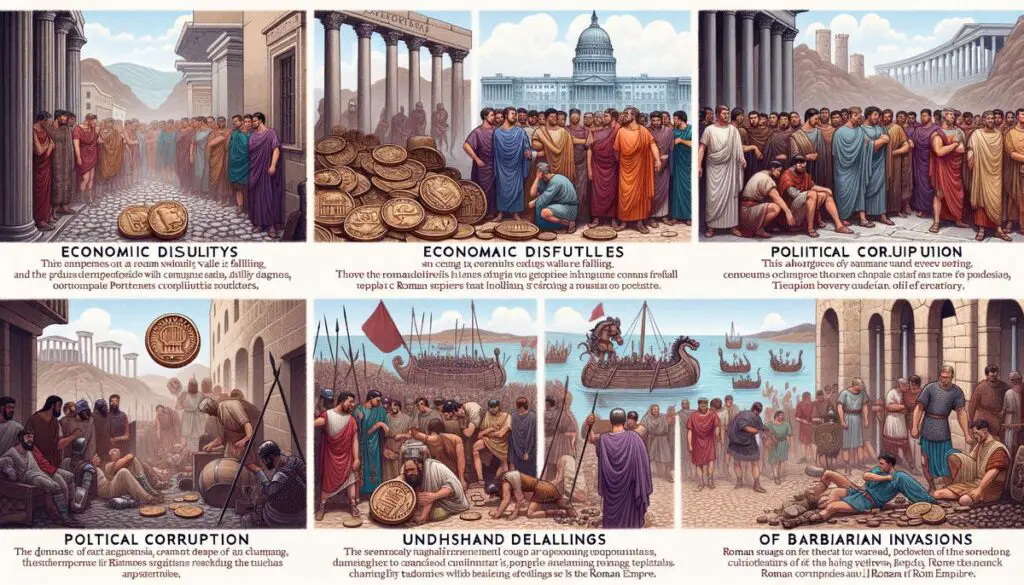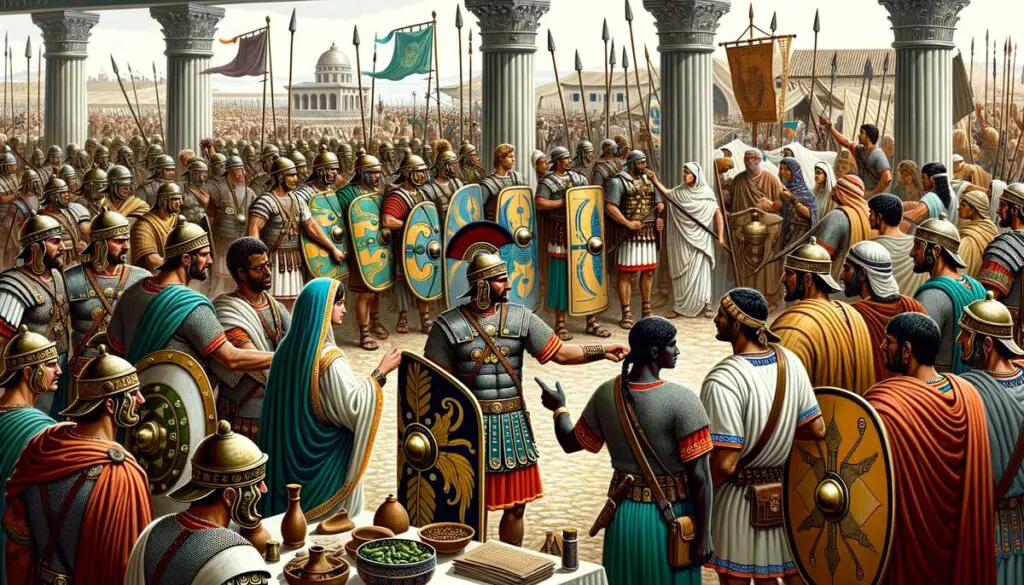The transformation from the Roman Republic to the Roman Empire marks a significant era in history, redefining the ancient society’s structure, culture, and impact on the world. This article explores the remarkable changes that occurred, shaping political dynamics, societal norms, and the military landscape. From the rise of influential leaders to the profound cultural evolutions, we uncover how Rome transitioned from a republic characterized by divided power to an empire under the rule of a singular authority.
Transition from Republic to Empire
The transition from the Roman Republic to the Roman Empire was a pivotal moment in history, marked by a series of seismic shifts in political power, military conquests, and the ambitions of influential figures. The period leading to this transformation was anything but straightforward, involving complex interplays of societal changes, economic pressures, and personal ambitions.
The seeds of change were sown during the late Roman Republic, a time characterized by remarkable expansion and military success. As Rome extended its dominions, the spoils of war and the wealth of conquered territories flowed into the Republic, creating stark economic disparities among its citizens. This disparity led to social upheaval, with the common people, or plebeians, demanding a share in the newly acquired wealth and a say in the political arena, which was dominated by the aristocratic Senate.
Amid this backdrop of growing unrest, ambitious military leaders began to rise, leveraging their successes and the loyalty of their troops to gain political power. Figures such as Gaius Marius and Lucius Cornelius Sulla set precedents for military involvement in politics, altering the Republic’s power dynamics. However, it was Julius Caesar whose actions directly catalyzed the transition to an empire. A military genius and a charismatic leader, Caesar expanded Rome’s territories significantly and enjoyed immense popularity among the Roman population. However, his accumulation of power and his crossing of the Rubicon in 49 BC, defying the Senate’s authority, led to a civil war.
Victorious, Caesar declared himself dictator for life, effectively undermining the republican system of checks and balances. His assassination in 44 BC was a last-ditch effort by republican supporters to save the Republic, but it only plunged Rome into further turmoil. The power vacuum left by Caesar’s death led to the rise of his adopted heir, Octavian, and other members of the Second Triumvirate, who sought to assert their control.
The final nail in the Republic’s coffin was the Battle of Actium in 31 BC, where Octavian emerged victorious over Mark Antony and Cleopatra, solidifying his power. In 27 BC, Octavian was bestowed the title Augustus by the Senate, marking the beginning of the Roman Empire and his reign as its first emperor. The transition was as much a result of individual ambition and military might as it was the consequence of systemic failures within the Republic. The shift fundamentally changed the course of Roman history, ushering in an era of imperial rule that would last for centuries.
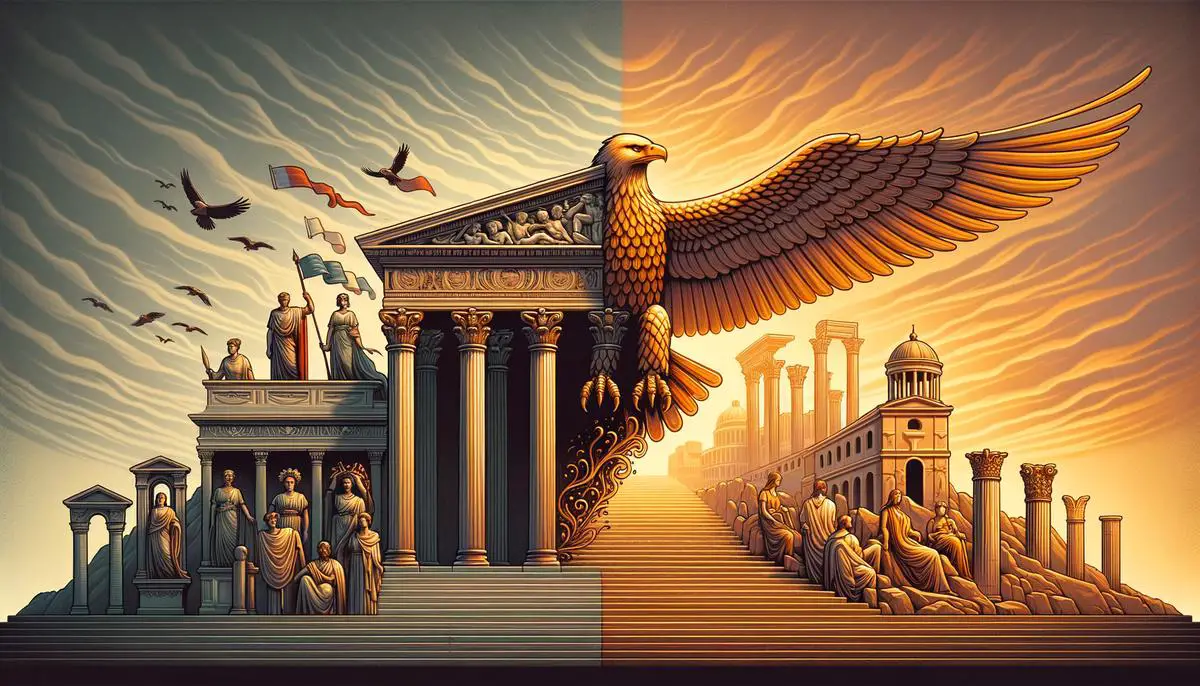
Governance Structures and Political Dynamics
Diving deeper into the Roman political landscape, it’s pivotal to understand the critical differences in governance structures and political dynamics between the Republic and the Empire. The Republic, established in the wake of the overthrow of the Roman monarchy in 509 BC, prided itself on a complex, but a fundamentally democratic system for its time. It was characterized by a broad distribution of power among various offices and assemblies. The Senate, a key institution, was composed of Rome’s elite, who held significant influence over legislative and foreign affairs. However, power was not solely in the hands of the aristocratic Senate. Popular assemblies allowed the free male Roman citizens to vote on laws and important decisions, reflecting the Republic’s semblance of democracy.
Contrasting with the Republic’s more collective governance, the Empire ushered in a period of autocracy. When Augustus, formerly known as Octavian, declared the establishment of the Roman Empire in 27 BC, it marked the beginning of centralized power within the hands of a singular ruler – the Emperor. Despite maintaining the outward appearance of the Republic’s structures, such as the Senate, their roles were substantially diminished. The Emperor assumed supreme military command, controlled the Roman provinces, and wielded the ultimate authority over the law. This concentration of power eliminated the checks and balances that had previously curtailed the accumulation of power in one individual or body during the Republic.
One cannot overlook the nuanced political dynamics that underpinned these governance structures. The Republic was characterized by its political factions, notably the Patricians and Plebeians, whose struggles and compromises shaped the governance of Rome. The Senate, dominated by the Patrician class, often found itself at odds with the Tribunes of the Plebs, officers elected by the Plebeians to protect their interests. This dynamic nature of power struggles and social contracts was a hallmark of the Republican era.
Conversely, the Empire’s political dynamics shifted towards a more top-down approach. The Emperor was the state, embodying Rome’s authority and divinity. This did not entirely erase factionalism or political intrigue; the Imperial court became the new arena for such dynamics. However, the nature of political maneuvering transformed, centering around the favor of the Emperor rather than the broader, more participative spaces of the Republic.
Additionally, the Empire brought about a new era of stability and administrative efficiency through reforms in taxation, law, and provincial governance. This centralized control allowed for unprecedented periods of peace and economic prosperity known as the Pax Romana. Yet, this concentration of power also sowed the seeds for potential despotism and the eventual decline when less capable rulers took the throne.
In transitioning from the Republic to the Empire, Rome underwent a profound transformation in its governance structures and political dynamics. From a state where power was distributed and contentious, to one where authority was centralized and streamlined, this shift had lasting impacts on the course of Western civilization. The echoes of the Republic’s democratic ideals and the Empire’s centralized control continue to influence modern political thought and systems, highlighting the enduring legacy of ancient Rome’s political evolution.
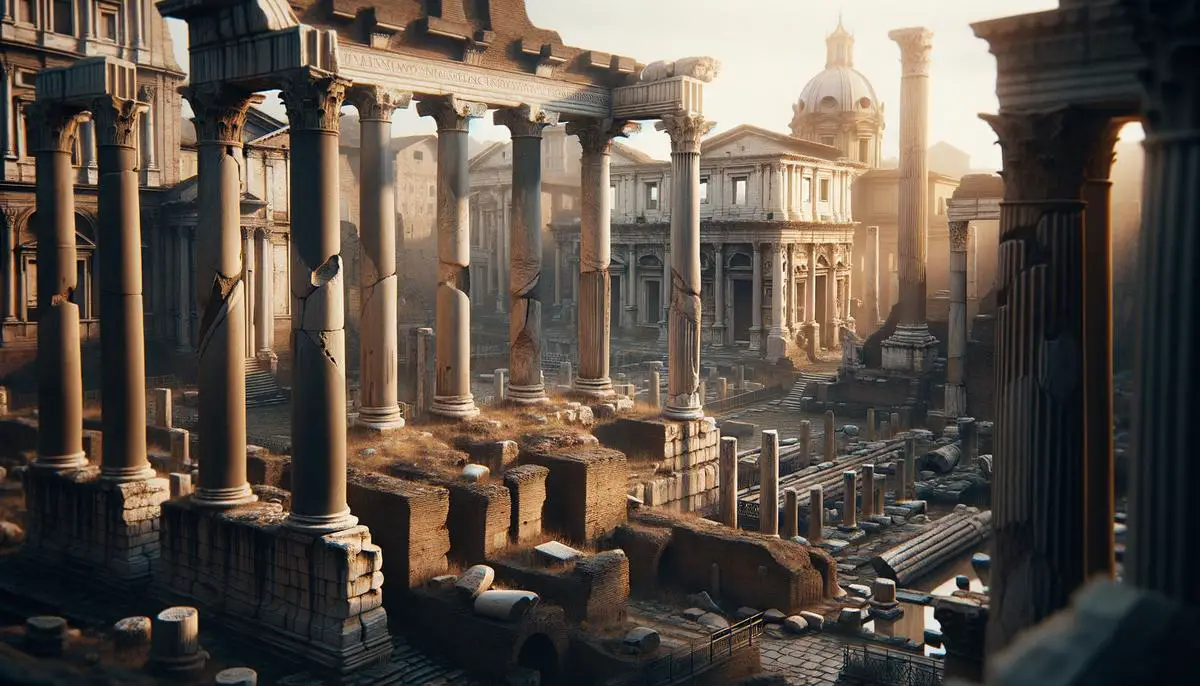
Social and Economic Impacts
The transformation from the Roman Republic to the Roman Empire was a turning point in world history, showcasing a profound shift not only in governance but also in societal and economic realms. As Rome expanded, the once-dominant Republic gave way to the centralized authority of the Empire, affecting the lives of countless individuals across its vast territories. The social and economic impacts of this monumental transition were both varied and widespread, shaping the course of Roman society and beyond.
Under the Empire, the social hierarchy of Rome saw significant shifts. The patricians – Rome’s aristocratic class – maintained their status, but the Emperor now overshadowed their power, centralizing authority and decision-making. This centralization led to a new elite class closely tied to the Emperor, gaining wealth and status through imperial favor rather than traditional republican virtues of public service and military valor. Plebeians and former middle classes found new opportunities in the imperial administration, but also faced challenges due to greater wealth concentration at the top.
Economically, the transition from Republic to Empire brought about stability and growth, primarily through the peace established across Roman territories, known as Pax Romana. This period allowed for the safe movement of goods, people, and ideas, leading to increased trade and economic growth. Agricultural production flourished under the Empire’s stability, feeding the ever-growing population of Rome and its provinces. Moreover, the Empire’s vast network of roads facilitated trade, military movements, and communication, further stimulating economic development.
However, this economic prosperity was not without its flaws. Wealth inequality grew as the elite class amassed large estates, often worked by slaves. This practice displaced small farmers, leading to increased urban migration and the growth of a class dependent on the grain dole for survival. While the Empire took steps to alleviate these issues through grain distribution and public works projects, the underlying economic disparities remained.
The concentration of power in the hands of the Emperor also brought about a more pronounced potential for economic manipulation. Emperors could, and did, debase the currency to fund their projects and wars, leading to inflationary pressures that would plague the empire in later centuries.
Culturally, the Empire initiated a period of unprecedented artistic and architectural achievements funded by the wealth of the empire and inspired by the Emperors’ desire to immortalize their reigns. This era saw the construction of iconic structures such as the Colosseum and the Pantheon, which not only served as communal spaces but also as monuments to imperial power. The establishment of a common coinage and the Latin language’s spread facilitated cultural integration across diverse regions, fostering a sense of Roman identity.
In summary, the transition from the Republic to the Empire was a complex process with far-reaching social and economic impacts. It altered the fabric of Roman society, redefined its economic landscapes, and left a legacy that endured well beyond its temporal bounds. Through centralized power and stability, it brought prosperity and growth, yet also sowed seeds of economic disparity and social stratification. The Roman Empire’s history presents a nuanced picture of the possibilities and perils inherent in such a profound transformation.
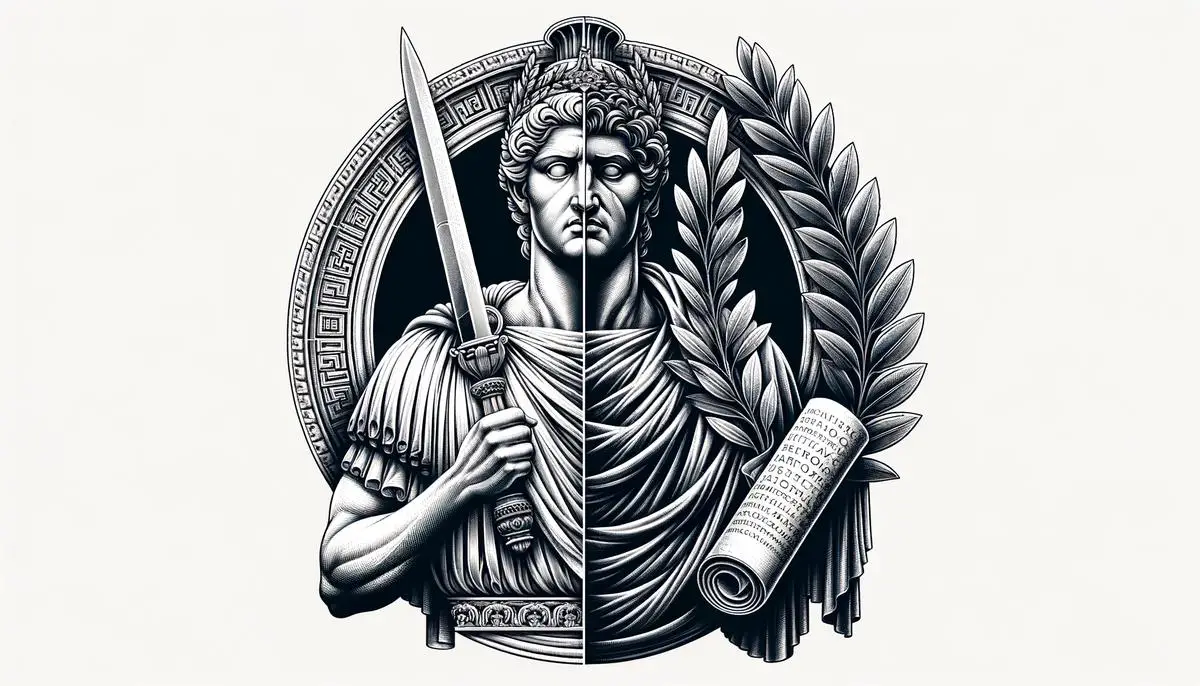
Military Evolution and Expansion
In the evolution from the Roman Republic to the Roman Empire, the military strategies and expansion tactics witnessed significant transformations. These changes not only reflected the shifting political landscape but also the adaptation to new challenges and opportunities that arose during this dynamic period.
During the late stages of the Roman Republic, military leadership began to evolve. Unlike the earlier reliance on citizen-soldiers who were farmers part-time, figures such as Gaius Marius introduced reforms that professionalized the Roman legions. Soldiers now served longer terms and received land upon retirement, fostering a sense of loyalty not to the Senate or the Republic, but to their generals. This shift fundamentally changed the nature of military ventures and strategies, as ambitious leaders sought personal glory and riches, often prioritizing these over the state’s interests.
The expansion tactics also saw a transition. During the Republic, Rome expanded through a combination of military conquest and forming strategic alliances. Conquered territories were often integrated into the Republic through a system of Romanization that promoted loyalty to Rome, ensuring a relatively stable expansion. However, as Rome transitioned into an Empire under Augustus, the approach to expansion became more systematic. Augustus established clear boundaries for the Roman Empire, such as the Rhine and Danube rivers, focusing more on consolidating and securing these frontiers rather than relentless expansion.- Under the Empire, military strategies further adapted to the expanding and increasingly diverse realm. The establishment of a standing army placed at strategic locations throughout the Empire, such as the limes (border fortifications), provided a swift response to threats and minimized the risk of large-scale invasions. The Roman Navy also played a crucial role, securing the Mediterranean from pirates and ensuring the safe transportation of goods, which was vital for the Empire’s economic stability.
Moreover, the military itself underwent changes in composition and tactics. The inclusion of auxiliary forces recruited from non-Roman citizens introduced new fighting techniques and helped in adapting to local conditions. These auxiliaries were instrumental in the Empire’s ability to maintain its borders and respond to regional threats effectively.
In conclusion, the transition from the Roman Republic to the Roman Empire was marked by significant changes in military strategies and expansion tactics. The professionalization of the army, strategic emphasis on defense, and the integration of diverse military practices from conquered peoples were key factors that helped Rome maintain its vast territories. These adaptations ensured the longevity of the Empire, allowing it to face both internal and external challenges with resilience.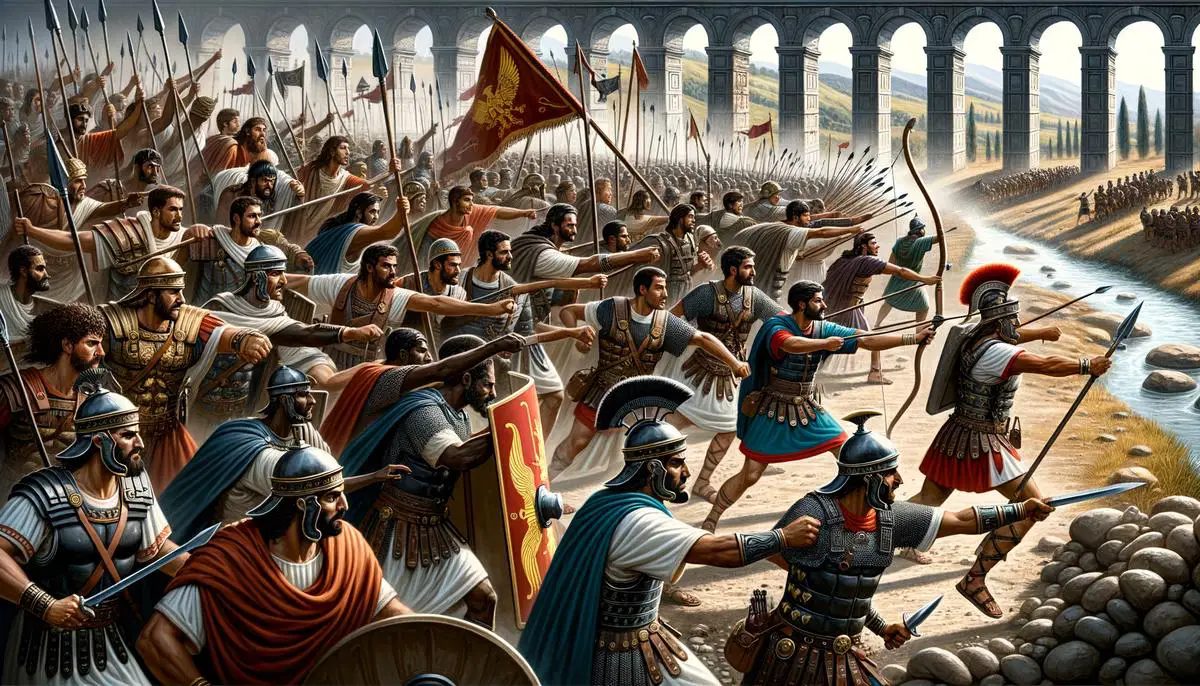
Cultural and Architectural Legacy
Exploring the vast landscape of Rome’s historical legacy reveals the depth and diversity of its contributions to the modern world, particularly in cultural and architectural realms. Both the Roman Republic and the Roman Empire have left indelible marks that continue to influence contemporary society, each period contributing its unique essence to the tapestry of history.
During the era of the Roman Republic, architectural and cultural innovations were deeply intertwined with the political and social ethos of the time. Public buildings and spaces were designed to reflect the democratic and civic values of the Republic. The Forum, for instance, was not just the physical center of Roman political life but also a symbol of the Republic’s public and participatory nature. It was here that citizens gathered to discuss matters of state, commerce, and justice, surrounded by structures that underscored the importance of civic engagement. Temples dedicated to the gods mirrored the Republic’s commitment to blending religious practices with the governance of the city, ensuring that divine favor was sought in public as well as private matters.
Cultural legacies from the Republic also include the development of the Latin language, which served as a foundation for the Romance languages as well as for the vocabulary of law, science, and the arts in many cultures. Additionally, Roman law, which began to be codified during the Republic, has had a lasting impact on legal systems worldwide. The concepts of citizenship, the rights of individuals, and the legal principles that originated in this era have been woven into the constitutions and legal frameworks of many modern nations.
Transitioning into the Roman Empire, the focus on grandeur and the monumental becomes evident in both architecture and culture. The empire’s incredible infrastructure projects, such as roads, aqueducts, and bridges, not only facilitated military movements and economic trade but also symbolize the Roman penchant for engineering and organization. The Colosseum, perhaps the most iconic emblem of Roman architecture, showcases the Empire’s advances in engineering and its cultural investment in public entertainment. These architectural marvels were designed to project the power and permanence of the Empire, serving as enduring testaments to Roman engineering and aesthetic ideals.
Culturally, the Empire advanced literature, philosophy, and the arts, absorbing and integrating elements from the diverse cultures within its dominions. This period saw the flourishing of literature with works from poets like Virgil, whose “Aeneid” sought to link Rome’s imperial destiny with its Trojan origins, thus providing a mythic foundation for Roman identity that transcended the Republic’s fall. The maintenance and expansion of the Imperial Library of Rome underpinned the cultural prestige of the Empire, serving as a center for scholarly research and study that attracted intellectuals from across the known world.
Remarkably, the architectural and cultural legacies of both the Republic and the Empire have not only survived but have been revitalized through the ages, influencing the development of Western civilization and beyond. The principles of Roman architecture, with its emphasis on symmetry, harmony, and engineering prowess, inspired the Renaissance and continue to be revered in modern architecture. Roman law, philosophy, and literature remain foundational to Western education and culture, evidencing the enduring legacy of Rome.
Thus, the Republic and Empire’s contributions to culture and architecture are vast and varied, reflecting the complexities of Roman society over the centuries. From the civic-oriented public spaces of the Republic to the monumental engineering feats of the Empire, Rome has bequeathed a rich heritage that continues to inspire and influence the modern world in profound ways.
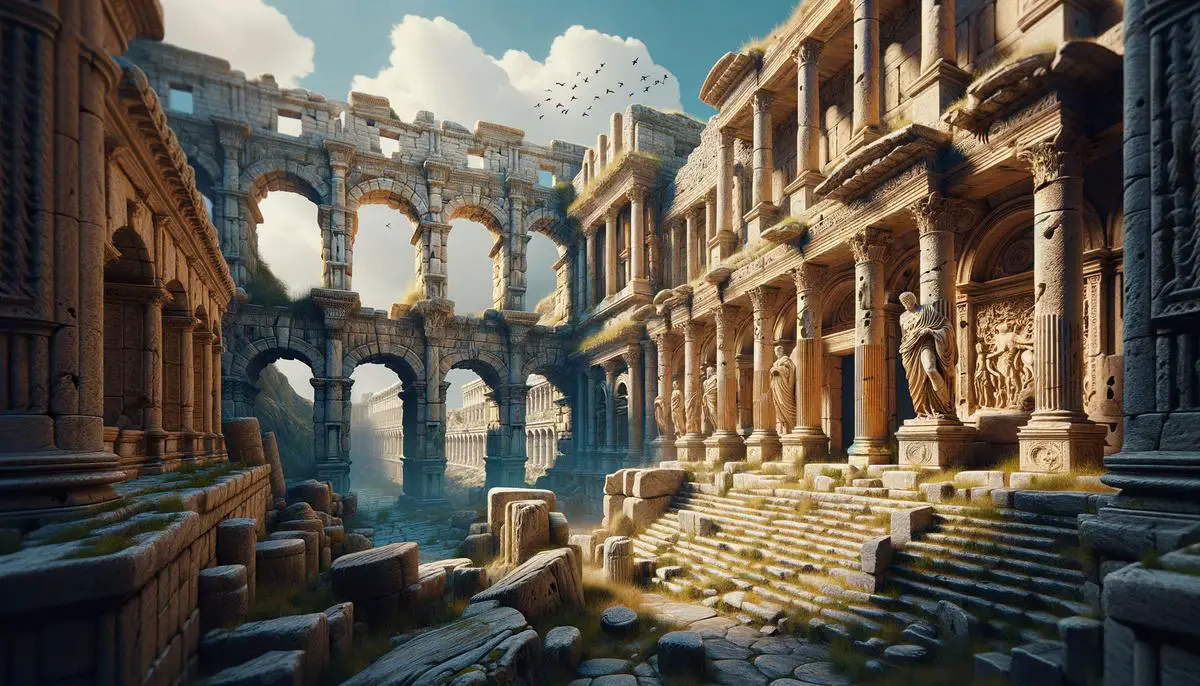
As we have explored the multifaceted transformation from the Roman Republic to the Roman Empire, it is evident how this era left an indelible mark on historical trajectories, governance models, and cultural innovations. Through the ambitious pursuits of military expansion, and the strategic shifts in political power, Rome crafted a legacy that continues to inspire and inform contemporary society. This examination not only highlights the complexities of Roman civilization but also underscores the enduring influence of their transition, echoing through the ages as a testament to the remarkable adaptability and vision of Rome.
- Julius Caesar Adaptations - April 15, 2024
- Declaration of Independence - April 15, 2024
- US Civil War Analysis - April 14, 2024
